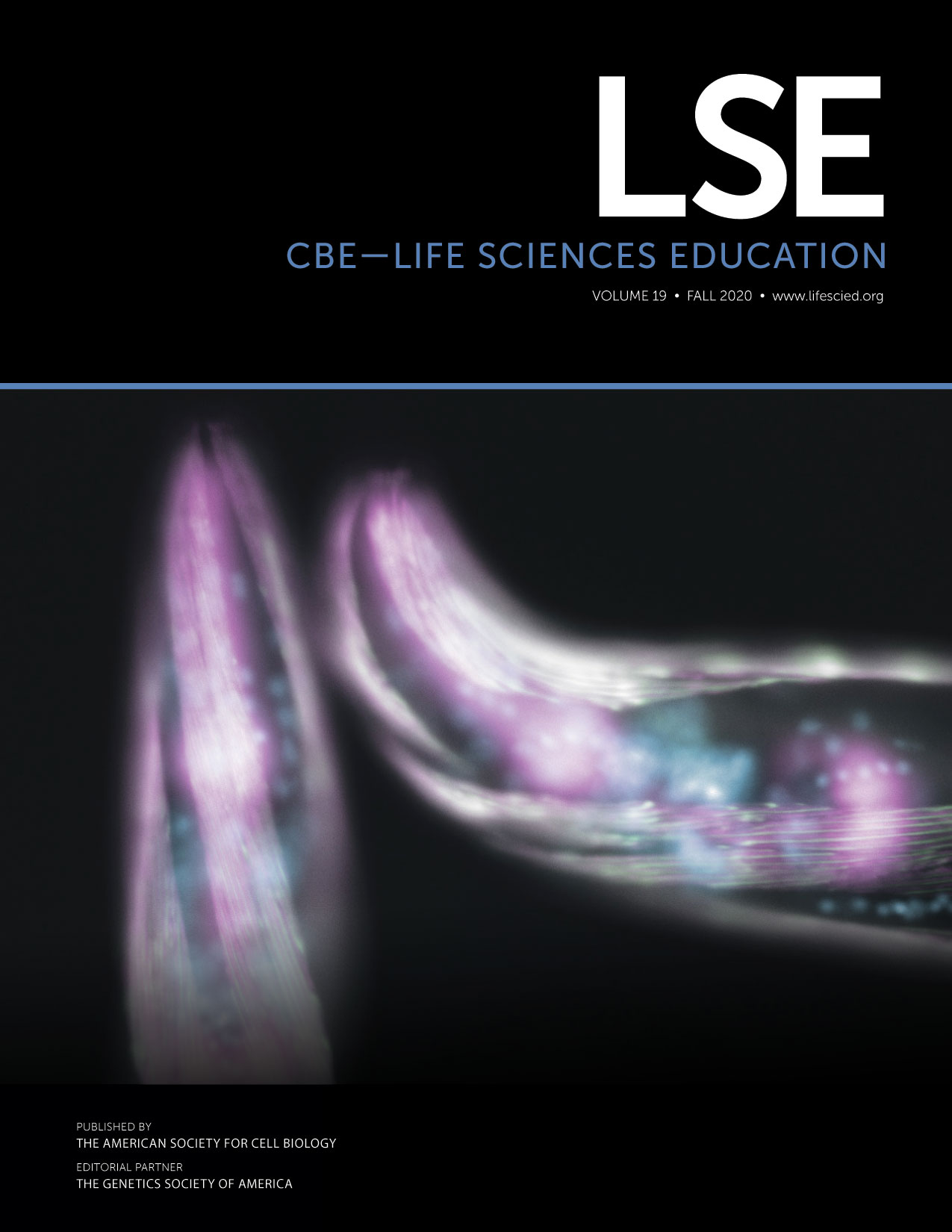Navigating Tensions of Research and Teaching: Biology Graduate Students’ Perceptions of the Research–Teaching Nexus within Ecological Contexts
Abstract
Graduate students represent both a significant component of the instructional team for biology departments as well as being students themselves learning to become academics. However, little is known about how biology graduate students perceive the relationships among their academic roles, particularly research and teaching. The present study used a cross-sectional survey to elicit the perceptions biology graduate students hold about the relationship between research and teaching. This work is an important first step in understanding the socialization processes of graduate students. Findings indicated that the majority of biology graduate students (65.5% of n = 255) hold synergistic perceptions of research and teaching. This is in spite of the mixed messages that biology graduate students hear about this relationship, including both “Teaching detracts from research” and “Teaching supports research.” Findings from this study have implications for multiple stakeholders in graduate education, including professional developers who need to be cognizant of the messages that are received and internalized by biology graduate students while engaged in professional development opportunities. Results also suggest that work is needed to address how messages are prioritized and internalized during graduate school.
INTRODUCTION
The adoption and implementation of research-based instructional strategies (RBIS) in postsecondary science, technology, engineering, and mathematics (STEM) classrooms has been slow (Stains et al., 2018) despite the overwhelming evidence supporting their effectiveness (e.g., Prince, 2004; Laursen et al., 2011; Freeman et al., 2014; Linton et al., 2014). Scholars have suggested that conflicting professional identities and differential values placed on research and teaching may act as barriers to the use of RBIS by many faculty (e.g., Brownell and Tanner, 2012; Laursen, 2019). For example, faculty who value research over teaching or see themselves as “researchers” and not “teachers” might be less likely to adopt RBIS. We can also hypothesize that faculty who view these roles as synergistic and interrelated might be more likely to use RBIS.
Faculty values and professional identities are shaped through complex socialization processes that often begin in graduate school (Wulff and Austin, 2004; Austin, 2011). These socialization processes include the interpretation and internalization of social and cultural messages about the values and workload that should be committed to research and teaching in academia (Bronfenbrenner, 1979; Austin, 2002; Weidman et al., 2001). This is how this article conceptualizes holistic “professional development” (this is in contrast to the more limited notion of professional development as a single intervention targeting a single aspect of teaching or research). Messages that prioritize one role (i.e., research or teaching) over the other can cause stress on an individual by creating conflict between the perceived importance of various academic roles (Colbeck, 2008). These messages might also lead to graduate students interpreting teaching or research as a more important role than the other within their professional development and advancement as academics.
Very little is known about the tensions that arise as graduate students attempt to interpret the roles of research and teaching in their future careers and how these tensions shape their developing academic identities (e.g., Brownell and Tanner, 2012). The present study used a cross-sectional survey method to elicit the messages that biology graduate students received about research and teaching during their professional development as academics. More specifically, we designed the survey to illuminate messages received from the biology graduate students’ social networks at multiple levels of institutional hierarchies, including academia in general, biology as a discipline, their institutions, and their departments. Recognizing the messages received by biology graduate students is a first step toward understanding their professional evolution from a developmental perspective (Nyquist and Sprague, 1998).
LITERATURE BACKGROUND
Researchers have shown that not only are graduate students increasingly serving as undergraduate instructors, but biology graduate students teach up to 90% of introductory biology laboratories within courses in research universities (Jackson, 1985; Sundberg et al., 2005; Connolly et al., 2016; National Academies of Sciences, Engineering, and Medicine [NASEM], 2018). Furthermore, biology graduate students as instructors have significant impacts on undergraduate student success and retention (Hughes and Ellefson, 2013; Connolly et al., 2016). In a blind, controlled study with 52 graduate students, researchers found that graduate students who participated in inquiry-based learning professional development had positive undergraduate learning outcomes compared with graduate students who participated in general instruction of best practices (Hughes and Ellefson, 2013). This widespread use of graduate students in instructional roles and their significance to undergraduate outcomes has led to calls for renewed investment in biology graduate student teaching professional development (e.g., Rushin et al., 1997; Austin, 2002; Gardner and Jones, 2011; Schussler et al., 2015; Reeves et al., 2016; NASEM, 2018) as well as preparation and professional development for careers outside academia (Fuhrmann et al., 2011; NASEM, 2018). Furthermore, many graduate students in biology have intentions to pursue careers with teaching as a critical aspect of the workload, so this component of their development is critical (Tanner and Allen, 2006; Fuhrmann et al., 2011; NASEM, 2018). However, biology graduate students are invested not only in teaching but also in research (Austin, 2002); therefore, their professional development should be considered in light of a more holistic perspective that includes both research and teaching.
As discussed in the next section, holistic professional development involves the internalization of beliefs, norms, and values as well as the construction of a professional identity. For faculty members, this process of development often begins when they are in graduate school (Wulff and Austin, 2004). Understanding what messages are received and internalized during graduate school provides scholars with data about the beliefs, norms, and values that are internalized as a student begins to develop a faculty identity.
Learning to Become a Faculty Member through Socialization
We use professional development to refer to the explicit and implicit learning processes that occur throughout the graduate school experience (Webster-Wright, 2009; Trede et al., 2012). We recognize that this might be a slightly different conceptualization of teaching professional development as commonly discussed in education research literature, especially in K–12 teacher training contexts (see Zhu and Zeichner 2014; Darling-Hammond et al., 2017). We recognize the rich tradition of this literature but contend that the context discussed here may warrant unique considerations. These learning processes are social in nature and include the internalization of norms, values, and behaviors associated with a profession (Webster-Wright, 2009; Trede et al., 2012). In terms of teaching professional development, there have been increases in the number of pedagogical training opportunities for biology graduate students over the last three decades (e.g., Rushin et al., 1997; Schussler et al., 2015) but much of this has been isolated from researcher development opportunities. In comparison to pedagogical training, less training has focused on the integrated roles of research and teaching and how to construct holistic professional development opportunities (Austin, 2002; Simons and Elen, 2007). Pedagogical training is often conducted in isolation of research training, reinforcing messages that these tasks are independent of one another.
For academics, research, teaching, and service represent the three interrelated categories of tasks that support and define their role (Simons and Elen, 2007). Faculty must actively decide how much time to dedicate to each category, as such invested time is often correlated with the professional meaning ascribed to each (Colbeck, 2008). In reality, these three pillars do not exist in isolation and are often intertwined (Austin, 1996; Simons and Elen, 2007; Arimoto, 2014). This can be seen in the many university mission statements that include the importance of the integration of research and teaching as aspirational goals (Simons and Elen, 2007). One example of this integration is seen when faculty draw upon multiple sources of knowledge and experiences to inform their teaching, including overlapping knowledge of and experiences with research (Oleson and Hora, 2014). The integration of these pillars into a professional identity is a hallmark of development as a scholar (Boyer, 1990; Brew, 2001) and should be an outcome of professional learning experiences in graduate education (O’Meara, 2002; Colbeck, 2008). While we note the importance of service in the professional identity development and roles of academics, the focus of this study limits itself to research and teaching. This is not to devalue the role of service in academia but to highlight the common tensions associated with research and teaching.
The professional development of biology graduate students is mediated by the dual cultures of research and teaching in which they are immersed during their graduate programs (Austin, 2002) and their participation in professional networks related to research and teaching (Stryker and Burke, 2000; Colbeck, 2008). By “culture,” we mean the norms, values, beliefs, and behaviors associated with a particular social group (i.e., academics, researchers, teachers; Tierney, 1997). By “professional network,” we mean the individuals that a graduate student interacts with both directly and indirectly about teaching and or research issues (i.e., peers, undergraduate students, faculty members, family members, etc.). Graduate school acts as an important experience wherein students learn the norms and values associated with these academic cultures (Austin, 1996; Nyquist and Sprague, 1998; Colbeck, 2008). These norms and values are often elucidated, defined, and reinforced by the disciplinary, institutional, and departmental contexts in which graduate students are embedded (Neumann, 1992; Austin, 1996). Beyond just a physical “place” or an institutional “structure,” these contexts can be thought of as being defined by the individuals that make them up. Graduate students interact with these individuals and receive messages related to research and teaching through social network ties (Sweitzer, 2009; Lane et al., 2018).
Colbeck (2008) argued that how these roles are internalized shapes graduate students’ sense of self and, in turn, can inform their professional development and current and future behaviors (Spencer et al., 1997). This may include their prioritization of research and teaching in their own professional identity development. In this study, we set out to understand how biology graduate students perceive the relationship between research and teaching and the socio-ecological factors that inform these perceptions. The next two sections provide a framework to: 1) define how the intersection of research and teaching may be conceptualized (the research–teaching nexus) and 2) conceptualize how social networks may play an important role in graduate student professional socialization processes.
The Research–Teaching Nexus
Scholars have used the research–teaching nexus (RTN) as a framework for understanding the relationship between research and teaching in academia. Neumann (1992) was the first to use the (reversed) term, the teaching–research nexus, when she explored how academics (i.e., faculty and administrators) perceived this nexus at their universities. Using metrics of research productivity and teaching effectiveness, faculty often reported perceiving a relationship between research and teaching (e.g., Neumann, 1992; Robertson, 2007). What this and other scholarship revealed is that perceptions of research and teaching interactions are complex. While Hattie and Marsh (1996) explored faculty’s perceived positive, zero, and negative relationships between teaching and research, these perceived relationships between research and teaching are often multifaceted. This is partially because academics perceive research and teaching in different ways depending on the context (i.e., within the classroom vs. during departmental hiring meetings; Neumann, 1992).
While Hattie and Marsh (1996) conceptualized the relationship between research and teaching as either positive, negative, or zero correlations, this work has been critiqued as not being responsive to the lived experiences and perceptions of academics (e.g., Verburgh et al., 2007). Positive, negative, and zero correlations imply a quantitative measurement and deliberate directionality of the research–teaching relationship that may oversimplify the reality of faculty interactions with these roles (Verburgh et al., 2007). In the present work, we draw upon the framework established by Hattie and Marsh (1996) but problematize these simple categorizations. By conceptualizing the research–teaching relationship as synergistic, antagonistic, or neutral and recognizing that these perceived relationships might differ across academic organizational levels, we present data that arguably come closer to representing the lived experiences held by faculty members when attempting to negotiate their research and teaching responsibilities.
Academics, particularly faculty, often perceive the relationship between research and teaching as synergistic (e.g., Neumann, 1992; Halse et al., 2007; Robertson, 2007; Robert and Carlsen, 2017). A synergistic perception indicates a mutually supportive relationship between research and teaching in which both are required for proper functioning of the university (Hattie and Marsh, 1996; Arimoto, 2014). One example of synergy that appears in the literature is in the supportive linkages between research and teaching in the classroom context (Pan et al., 2013; Griffiths, 2004; Healey, 2005). For example, Pan et al. (2013) found that research served as a prime context for students to learn and develop skills such as critical thinking and that this explicit linkage between research and teaching in the classroom made the students more employable. A specific example of integrating research and teaching in the classroom is with course-based undergraduate research experiences (CUREs; Kloser et al., 2011; Brownell and Kloser, 2015; Kerr and Yan, 2016). CUREs are unique courses in which students engage in authentic research processes by addressing research questions with unknown outcomes and problems with solutions that have social relevance (Corwin et al., 2015; Dolan, 2016).
On the other end of the spectrum of the research–teaching relationship is the perception that research and teaching are antagonistic to one another. This perception is often expressed with regard to the time constraints that teaching places on research, or vice versa (Gottlieb and Keith, 1997). In a nonempirical commentary, Brownell and Tanner (2012) posited that time is a large perceived barrier to changing teaching practices to be more evidence based, specifically time needed for faculty to reflect upon their teaching. With success in tenure and promotion often disproportionally supported by faculty evidence of research outcomes, there is little surprise that they would perceive the need to spend more time (as “zero-sum function”; Reid, 2020) on research and less time on teaching (Savkar and Lokere, 2010; Brownell and Tanner, 2012; Farcas et al., 2016; Dennin et al., 2017). STEM faculty are often hired for their high research experience with little consideration given to teaching experience (Savkar and Lokere, 2010), and this is mirrored in graduate training, where research development is prioritized over teaching development (Brownell and Tanner, 2012; Bradforth et al., 2015). Very little research has been conducted to examine graduate students’ perceived barriers to teaching, but it is reasonable to assume these may align with the faculty who mentor them.
Results from these studies demonstrate the complex nature of the RTN, how it is perceived by university faculty, and how it is reinforced by academic cultural contexts. The following section outlines ecological systems theory as a way to conceptualize the multifaceted nature of the RTN as applied to graduate student professional development.
CONCEPTUAL FRAMEWORK: THE RESEARCH–TEACHING ECOLOGY
We drew upon the research–teaching ecology (Figure 1) as a conceptual framework to situate our study, because it integrates both social and cultural structures that shape professional development (Reid, 2020). This framework was adapted from Bronfenbrenner’s (1979) ecological systems theory and the RTN literature to focus on future and current faculty professional learning in academic cultural contexts. In the case of the present study, the critical outcomes are perceptions of the RTN. The premise of this framework is that perceptions of the RTN are informed through social and cultural structures that individuals are embedded in during their professional development. According to Bronfenbrenner (1979), these social and cultural structures are situated within local and global ecologies. These ecologies include interactions between the developing person and his or her environment, including social network interactions (Neal and Neal, 2013) and cultural interactions (Austin, 1996). There are four levels to the research–teaching ecology framework that is used to guide the study: the individual, the microsystem, the exosystem, and the macrosystem (Figure 1). Each is explained in more detail below. While we recognize the importance of the mesosystem and chronosystem levels to Bronfenbrenner’s (1979) ecological framework, these systems were beyond the scope of this study.
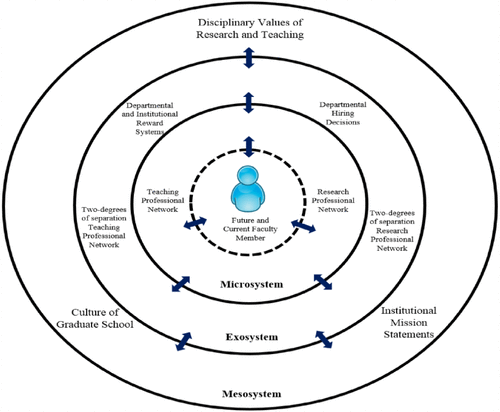
FIGURE 1. The research–teaching ecology adapted from Bronfenbrenner (1979).
The Individual Level
Graduate students enter graduate school with individual preconceived ideas, beliefs, values, and perceptions about research, teaching, and the relationship between these two activities. These preconceived notions about the RTN are further shaped and internalized in the individual through socialization processes (Bronfenbrenner, 1979; Colbeck, 2008). Graduate students are socialized into cultures of research and teaching through professional development activities, including participation in social networks and peripheral activities related to research and teaching (Austin, 1996; Colbeck, 2008). These social and cultural structures are hierarchical and inform the perceptions held by the graduate student. These structures form the larger ecosystems (microsystem, exosystem, macrosystem; Figure 1) of the research–teaching ecology.
The Microsystem
Graduate students are socialized into professional networks of teaching and research when they enter graduate school (Nyquist and Sprague, 1998; Wulff and Austin, 2004; Sweitzer, 2009). These networks form a local ecological system known as the microsystem. For biology graduate students, this includes the people who they directly interact with on a regular basis (i.e., advisors, peers, students, instructors, committee members, and teaching supervisors). Bronfenbrenner (1979) posited that these interactions involve messages, implicit or explicit, being sent to and from the developing individual. In the context of the RTN, biology graduate students receive messages related to the importance and prioritization of their research and teaching roles. For example, advisors may indicate that their students should prioritize research over teaching or vice versa.
The Exosystem
The exosystem level is more distal, and individuals do not regularly participate in direct networked interactions with individuals in this system (Bronfenbrenner, 1979). The social interactions that occur at this level represent two degrees of separation from the individual. For example, a graduate student might rarely or never speak with the college dean, however, the graduate student’s advisor may have more regular interactions with the dean. The decisions a dean makes, and the messages communicated to an advisor related to research or teaching, could have a trickle-down effect from the administrator to the advisor to the student.
This ecological level includes cultural structures as well as social structures. The culture of the department, in regard to research and teaching, has the potential to inform graduate students’ perceptions of the RTN. This would include training opportunities for teaching and research, how research and teaching are respected and valued by distal members of the graduate students’ network, and the perceived competency of others in the department to conduct research, teach, or balance both responsibilities concurrently.
The Macrosystem
The macrosystem includes other cultural structures that are further removed from the graduate student as an individual but could inform graduate students’ perceptions of the RTN. For biology graduate students, two cultures may be most prominent: the culture of academia and the culture of biology as a discipline. The culture of academia includes discipline-independent academic norms and contexts, whereas the culture of biology involves those norms that are more directly related to the discipline-specific academic culture of biology. We recognize that there may be significant overlaps between the two cultures, making them difficult to distinguish at times.
Academic and disciplinary cultures of research and teaching refer to the norms, values, beliefs, and behaviors in a profession that are established by members of the group (Austin, 1996; Tierney, 1997). Scholarship has demonstrated how disciplinary context can influence perceptions of the RTN held by academics (Halse et al., 2007; Taylor, 2008; Lubbe, 2015). For example, non-STEM disciplines differ from STEM disciplines in their conceptions of research and teaching, and this informs the ways research and teaching interrelate within the discipline itself (Griffiths, 2004; Taylor, 2008; Duff and Marriott, 2017).
Summary
The RTE, as an ecological framework for professional development, recognizes the structures that shape graduate student professional development. These structures (i.e., teaching experiences, formal professional development, professional networks, values of research and teaching) are interdependent and should not be isolated. For instance, the hiring of a new biologist in a department can add to graduate students’ professional networks. Additionally, this addition to the department can bring in new expertise in research, teaching, or both. Graduate students can choose to work with this individual, forming ties and sharing information, including the values associated with research and teaching.
Research Questions
This work explores biology graduate students’ perceptions of the RTN, as well as the socio-ecological contexts that shape these perceptions. The research questions guiding this study are:
What are biology graduate students’ perceptions of the RTN, and how are these perceptions related to graduate student experiences and professional identity variables?
What messages are biology graduate students receiving about the RTN and at which ecological levels are these being communicated?
How do biology graduate students perceive the RTN across institutional, academic, and disciplinary ecosystem levels?
METHODS
The present study was descriptive in nature and used a large-scale, cross-sectional survey research design. A 38-item survey with both open- and closed-response items was constructed to elicit participant perceptions of the RTN and relevant ecological systems levels in which messages related to the RTN were being communicated. This study was approved by the Middle Tennessee State University Institutional Review Board (MTSU IRB 19-2173).
Sampling and Hypotheses
Participants were recruited via a stratified random sampling method (Mills and Gay, 2016). Within the larger population of biology graduate students, we recruited participants from subpopulations of teaching-focused and research-focused universities (see definitions in Recruitment of Sample), as well as those who were in the beginning, middle, and end of their graduate programs. Using this sampling strategy, it was hypothesized that biology graduate students’ perceptions of the RTN will differ across personal and professional demographics. Particularly, we were interested in comparing perceptions of the RTN between populations from teaching-focused universities and research-focused universities; those at the beginning, middle, and end of their programs; and those who identify as a researcher, teacher, or hold a hybrid identity (i.e., researcher-teacher or teacher-researcher).
Recruitment of Sample.
We recruited participants using the Society for the Advancement of Biology Education Research, the National Association for Research in Science Teaching, Ecological Society of America, the National Association of Biology Teachers, and the Biology Teaching Assistant Project Listservs, and personal networks of the authors. Using the Carnegie Classification System, teaching-intensive and research-intensive universities were defined as follows (Carnegie Classification of Institutions of Higher Education, n.d.):
Teaching-intensive universities: universities that have moderate research activity and/or award at least 50 master’s degrees and fewer than 20 doctoral degrees during the academic year, which include Master’s Colleges and Universities (M1, M2, and M3) and Doctoral/Professional Universities (D/PU).
Research-intensive universities: universities with higher and highest research activity, which include Doctoral Universities with very high research activity (R1) and high research activity (R2).
Participant Inclusion Criteria.
Research has suggested that personal orientations toward research and teaching are influential to the perceptions of the nexus between research and teaching (Taylor, 2008; Grant and Wakelin, 2009). Therefore, to be included in this study, participants had to meet the following criteria:
They had to be enrolled in a degree-seeking program that will result in a graduate degree from a department of biology (including ecology and evolutionary biology departments, cell and molecular biology departments, and other departments considered as falling within the confines of biology as a discipline) at either a teaching-intensive university or research-intensive university (see definitions in Recruitment of Sample).
They had to have been actively engaged in research (either disciplinary or discipline-based educational) and supported with either a teaching assistantship or research assistantship. This ensured participants have had experience in research and, therefore, have some perception of what research is.
They had to have at least one semester of teaching experience while in graduate school. This ensured participants have had experience in teaching and, therefore, have some perception of what teaching is. Specifically, this teaching experience is in the form of a teaching assistantship in their current or previous graduate degrees.
Survey Description
We distributed a cross-sectional survey that asked participants about their perceptions of teaching and research, and the possible relationship therein, using Qualtrics software (Qualtrics, Version 2018).
Survey Design, Dissemination, and Validation.
The survey used in this study was researcher generated from an extensive review of the literature on the RTN and a published survey that attended to perceptions of departmental and institutional cultures about teaching (Survey of Climate for Instructional Improvement, items 20–29; Walter et al., 2017). Survey items for each ecological level were designed to inform us of whether the graduate students perceived a relationship of research and teaching at that level as well as whether they perceived these relationships as synergistic, antagonistic, or neutral (see Supplemental Material).
Validity evidence was gathered in three phases (e.g., Kumar et al., 2015; Reeves and Marbach-Ad, 2016): 1) content validity evidence was gathered through an extensive literature review to develop a conceptual framework and write survey items aligned with the framework (Table 1); 2) face validity and construct validity evidence were collected through iterative discussions with experts in social psychology, biology, and biology education research; and 3) pilot testing followed up with think-aloud interviews with a subgroup of graduate students was used to collect validity evidence.
| Ecological level | Number of survey items | Item numbersa |
|---|---|---|
| Individual | Perceptions and conceptions: 7 | 15–21 |
| Microsystem | Social interactions: 6 | 22–27 |
| Exosystem | Social interactions: 6 | 29–42 |
| Departmental/institutional culture: 8 | ||
| Macrosystem | Academic culture: 6Disciplinary culture: 6 | 44–54, 56 |
| Total | 39 |
Think-aloud interviews were conducted with 10 biology or biology education doctoral students. The primary goal of these interviews was to understand how participants would most likely interpret key constructs such as teaching and research. Participants were asked to define research and teaching as well as give a description of each. Example responses are provided in Supplemental Table 1. There was some variation in their conceptualizations about the purpose and nature of teaching; however, each participant described teaching as an interaction between a teacher (the participant) and his or her students or undergrads (mentoring). In general, participants referred to teaching as transferring information from one person to another in a formal setting. Only two graduate students discussed mentoring as teaching, and another thought of teaching as guiding students’ conceptual understanding rather than rote memorization. These conceptions align with other scholarship on perspectives of teaching, which describes both transmission and apprenticeship views (Pratt et al., 2001). For research, there was less variation in participants’ conceptions. The majority described research as a discovery process wherein you seek an answer to a question or a process approach wherein you determine a solution to a problem (Brew, 2001). Despite some variability in participant conceptions of research and teaching that may serve as a limitation to this study, consistency across these interviews provides some validity evidence for how graduate students interpreted the constructs.
Validity evidence from these participants was used to reformat the survey and redesign some survey items. Based on the similarities in definitions of research and teaching from the think-aloud interviews, we left these terms to be interpreted by each participant. Each participant described synergistic and antagonistic in similar ways, with synergistic relationships being defined as supportive and antagonistic relationships defined as conflicting. Therefore, we did not provide an explicit definition of synergistic or antagonistic. This piloting process of the survey resulted in a survey instrument that was 38 items long and took approximately 15–20 minutes to complete (Table 1). Convergent validity was difficult to come by due to the lack of scholarship on developing surveys in this context.
DATA ANALYSIS
Research Question 1: What Are Biology Graduate Students’ Perceptions of the RTN, and How Are These Perceptions Related to Graduate Student Experiences and Professional Identity Variables?
The outcome variable for this study was the individual-level RTN perceptions of biology graduate students. Participants selected one of three responses for three items on the survey. Each response corresponded to either antagonistic, neutral, or synergistic perceptions of the RTN. Selected responses were coded as either −1 for antagonistic, 0 for neutral, or +1 for synergistic (Table 2). For each participant, a total score was calculated by summing the three scores for the questions to construct a weighted total of his or her perception (perception score). For example, if a participant selected the antagonistic response for the first question, and the synergistic responses for the second and third question, the final perception score would be +1, indicating a slightly synergistic perception. A final perception code was given to each participant based on his or her overall RTN score (see Table 2 note).
| Survey itemsa | |||
|---|---|---|---|
| Survey item no. | Antagonistic (−1) | Neutral (0) | Synergistic (+1) |
| Q1 | Research and teaching are antagonistic activities and are often in conflict with one another. | Research and teaching are independent activities that have no bearing on each other. | Teaching and research are synergistic activities. |
| Q2 | My teaching interferes with my research capabilities and productivity. | My teaching has no effect on my development as a researcher. | My teaching helps me be a better researcher. |
| Q3 | My research interferes with my teaching capabilities and productivity. | My research has no effect on my development as a teacher. | My research helps me be a better teacher. |
To perform statistical analyses, we transformed the data from a scale of −3 to +3 to a scale of 1 to 7. In this case, very antagonistic was transformed from −3 to 1, neutral was transformed from 0 to 4, and very synergistic was transformed from +3 to 7. Descriptive statistics were generated for the overall sample, and the frequency of students for each RTN perception was determined. Nonparametric Kruskal-Wallis and Wilcoxon tests were used (due to nonnormality of the data) to compare RTN perceptions across different predictor variables (Supplemental Table 2, headers shown in bold) to test our hypotheses related to student experience and professional identity variables.
Research Question 2: What Messages Are Biology Graduate Students Receiving about the RTN and at Which Ecological Levels Are These Being Communicated?
For the microsystem and exosystem, participants responded to six survey items that represented different RTN messages that could be transmitted to them at these levels. For each message, participants were asked to respond by selecting the actor (someone they interact with) from whom they may have heard the particular message. The microsystem consisted of the following actor options: advisor, committee members, instructors, peers, undergraduate students, and teaching supervisor; whereas, the exosystem consisted of the following actor options: college/academic dean, dean of research, department chair, departmental/institutional staff, faculty development director, and program coordinator. For example, survey item 9 stated: “Research should be your priority and teaching will not support your research.” The frequency for each actor–message pair was calculated. Participants were able to select multiple messages for each actor in the survey items. For interpretation, we calculated percentages from the sample size (n = 255). While some of these actors, such as advisors, might represent more than one person, we wrote the survey items under the assumption that each graduate student had one, and if he or she had more than one, then the response would represent a holistic message being received.
Research Question 3: How Do Biology Graduate Students Perceive the RTN across Institutional, Academic, and Disciplinary Ecosystem Levels?
For the exosystem and macrosystem cultural structures, participants responded to eight (for ecosystems) or 12 (for macrosystems) Likert-style survey items. Medians were calculated for each statement for both the exosystem and macrosystem. The exosystem survey items were paired to create four groups of items. Each group was composed of an item related to teaching and one related to research. Specifically, these items were written to probe into the departmental and institutional cultures of research and teaching. For example, one survey item asked participants their agreement on whether they were encouraged to seek out professional development opportunities for research. The paired item asked the same, but for teaching. Wilcoxon signed-rank tests were used to determine differences within each pairing for differences in research and teaching as well as differences between research-focused and teaching-focused universities.
The macrosystem items were divided into two groups of statements—those that reflected the academic culture (six items) and those that reflected the disciplinary culture (six items). For the analysis of the culture of the department, a Wilcoxon signed-rank test was used to compare participants’ perceptions. For disciplinary culture, relative frequencies were calculated for each response (i.e., strongly disagree, somewhat disagree, neither agree nor disagree, somewhat agree, strongly agree) to 12 items relating to the academic and disciplinary cultures that inform perceptions of the RTN.
RESULTS
Sample Description
We collected responses from n = 362 biology graduate students across North America (n = 8 participants from Canada). We removed n = 95 for not completing each survey item and n = 12 for not passing the validity check question that asked them to fill in a particular bubble response. This resulted in a total of n = 255 complete responses for additional analysis, including those participants from Canada. The majority of participants were between the ages of 21 and 30 years (78.0%), from a research-intensive university (81.6%), and held a researcher-teacher hybrid professional identity (56.5%). Our sample consisted of graduate students mostly working toward their doctorates (71.8%) and conducting biological sciences research (85.9%) as compared with biology education research (13.7%; one participant did not respond to this demographic question). Full sample demographics can be found in Supplemental Table 2.
To determine whether the sample was representative of graduate student enrollment, we compared the expanded university classification to align with Carnegie Classification (Carnegie, n.d.; R1, R2, D/PU, Master’s). Based on data collected in 2016 from the Council of Graduate Schools (Okahana and Zhou, 2018), our sample was slightly skewed toward R2 universities (0.03% of total enrollment), followed by R1 universities (0.02%), D/PU universities (0.01%), and finally Master’s universities (0.00%). These percentages reflect the number of students in this study as a proportion of the total enrollment recorded in 2016.
Research Question 1: What Are Biology Graduate Students’ Perceptions of the RTN, and How Are These Perceptions Related to Graduate Student Experiences and Professional Identity Variables?
Biology graduate students primarily held very synergistic perceptions of the RTN (50.2%; Figure 2). Notable here is how few graduate students reported slightly antagonistic (6.7%), antagonistic (2.0%), and very antagonistic (1.5%) perceptions. This is in line with much of the literature on faculty’s and/or academics’ perceptions of the RTN (e.g., Neumann, 1992; Robertson, 2007).
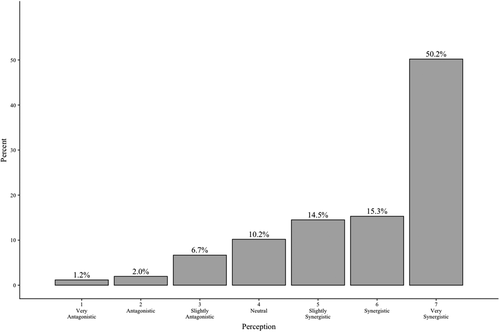
FIGURE 2. Biology graduate students’ perceptions of the RTN.
A Kruskal-Wallis H test showed that there was a statistically significant difference in the RTN perception score between the different academic identities, χ2(3) = 8.21, p = 0.04. Post hoc analysis revealed a statistically significant difference between researcher identity and researcher-teacher identity (p = 0.006) as well as between researcher identity and teacher-researcher identity (p = 0.028), with participants with hybrid identities (i.e., researcher-teacher and teacher-researcher) having a statistically higher RTN perception score. There was a mean rank RTN perception score of 1.36 for participants holding a researcher identity, an RTN perception score of 1.96 for participants holding a researcher-teacher identity, an RTN perception score of 1.98 for participants holding a teacher-researcher identity, and an RTN score of 1.33 for participants holding a teacher identity (Figure 3). This means that participants with a hybrid identity were statistically more likely to identify with a synergistic RTN perspective.
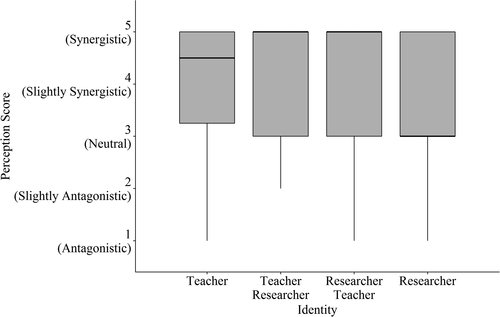
FIGURE 3. Biology graduate students’ perceptions of the RTN differed based on self-reported professional identity.
A Kruskal-Wallis H test showed that there was a statistically significant difference in the RTN perception score between the desired future career variables, χ2(3) = 17.95, p < 0.001. There was a mean rank perception score of 1.46 for participants wanting to go into nonacademic positions, an RTN perception score of 1.50 for participants wanting to go into teaching positions, an RTN perception score of 2.10 for participants wanting a balanced research–teaching position, and an RTN perception score of 2.23 for participants wanting primarily research positions (Figure 4). Post hoc analysis revealed that students with intentions to pursue careers at research-intensive institutions held more synergistic perceptions than biology graduate students pursuing careers at teaching institutions (p = 0.025) and research–teaching balanced institutions (p = 0.006). Additionally, this analysis showed that biology graduate students with plans to enter the nonacademic sector held less synergistic perceptions of the RTN than those planning to pursue careers at teaching (p = 0.005) and research–teaching balanced institutions (p = 0.006).
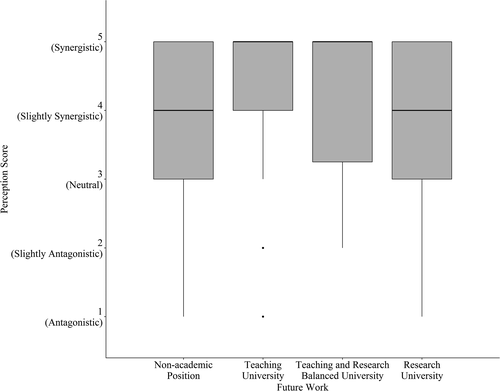
FIGURE 4. Biology graduate students’ perceptions of the RTN differed based on their plans to work in a nonacademic setting, teaching university, teaching–research balanced university, or research university.
A Wilcoxon signed-rank test showed that RTN perceptions were not statistically significantly different based on the type of degree the participant was pursuing (W = 6197.5, p = 0.429). The mean RTN perception score was 5.68 for master’s-level students and 5.87 for doctoral-level students. However, a statistically significant difference was found in RTN perception scores based on the type of research being conducted by the participant (W = 4817.5, p = 0.009), with mean RTN perception scores of 2.20 for biology education research and 1.75 for biological sciences research (Figure 5). Those participants pursing a project in biology education research are more likely to perceive research and teaching as synergistic.
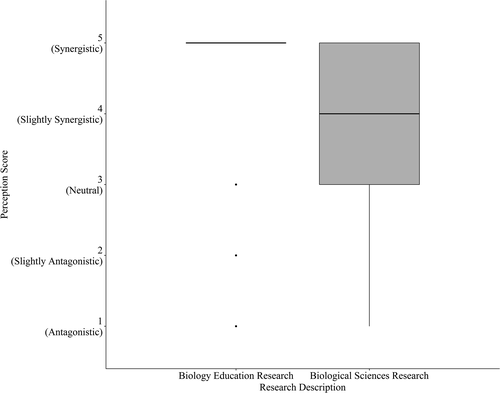
FIGURE 5. Biology graduate students’ perceptions of the RTN differed based on whether they conducted biology education research or biological sciences research.
Research Question 2: What Messages Are Biology Graduate Students Receiving about the RTN and at Which Ecological Levels Are These Being Communicated?
Messages Received from the Microsystem.
Within their microsystem interactions, biology graduate students receive mixed messages about the prioritization of research and teaching (Supplemental Table 3). Advisors are perceived to send both antagonistic (33.8%) and synergistic messages (56.9%; Figure 6). Interestingly, some graduate students (n = 12) reported receiving the conflicting messages that “Teaching will not support your research” and “Teaching will support your research” from their advisors. Peers tend to send proportionately more antagonistic messages than other groups, while teaching supervisors send proportionately more synergistic messages than other groups (Figure 6).
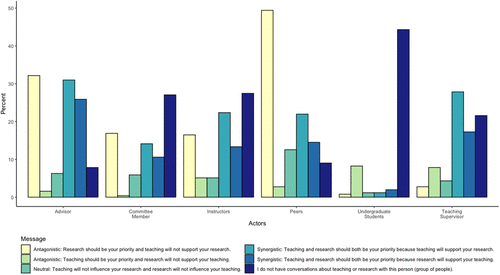
FIGURE 6. Actor groups and the messages about the RTN within the microsystem social structure received by biology graduate students.
Messages Received from the Exosystem.
The exosystem is a larger social structure that the developing individual (i.e., graduate student) does not actively participate in; rather the structures in this system interact with the microsystem with which the graduate student then participates and interacts. For this analysis, survey items were grouped into two categories: individuals within the graduate students’ exosystem (social structures) and the culture of the department and institution (cultural structures; research question 3).
Within the exosystem social structure, biology graduate students received few messages about the relationship between research and teaching (Figure 7). Department chairs, departmental and institutional staff, and program coordinators tended to be more active in sending messages about the synergy between research and teaching. Overall, there were significantly fewer messages sent to biology graduate students from this level (indicated by the number of “No message received” responses; Supplemental Table 4). This indicates these are interactions that the graduate students do not directly participate in on a regular basis (as defined by the exosystem).
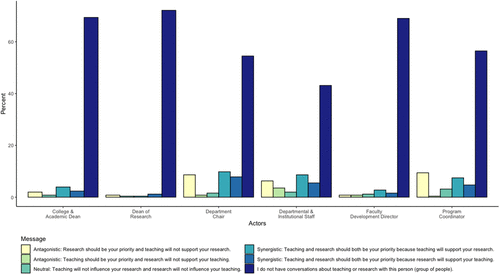
FIGURE 7. Actor groups and the messages about the RTN within the exosystem social structure received by biology graduate students.
Research Question 3: How Do Biology Graduate Students Perceive the RTN across Institutional, Academic, and Disciplinary Ecosystem Levels?
Exosystem Cultural Structure.
For the cultural structure of the exosystem, biology graduate students reported more agreement toward a supportive research environment in all categories (Figure 8): they had adequate space for research (Mdn = 4) as opposed to teaching (Mdn = 4), z = 5.57, p < 0.001, r = 0.25; they had adequate time to reflect on research (Mdn = 4) as opposed to teaching (Mdn = 2), z = 8.96, p < 0.001, r = 0.40; they felt sufficiently competent to conduct research (Mdn = 4) as opposed to teach (Mdn = 2), z = 9.53, p < 0.001, r = 0.42; and they were encouraged to seek out support and professional development for research (Mdn = 4) as opposed to teaching (Mdn = 3), z = 10.25, p < 0.001, r = 0.45.
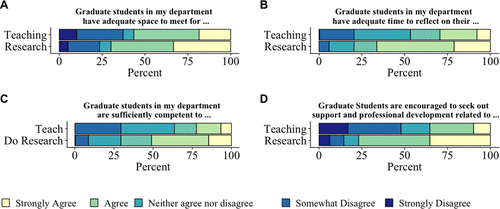
FIGURE 8. Differences in biology graduate student perceptions of the exosystem cultural structure.
Macrosystem Cultural Structure.
Findings point to mixed messages being received by biology graduate students based on being embedded in these cultures (Figures 9 and 10). For example, more than 50% of participants strongly agreed or somewhat agreed that “To be recognized in my field of biology, it is more important to be a successful researcher than a successful teacher” and “Evidence of effective teaching and productive research is valued when making decisions about employment in biology.” (Figure 10). However, “Teaching is respected as an important aspect of being a biologist” had only 30% agreement (Figure 10).
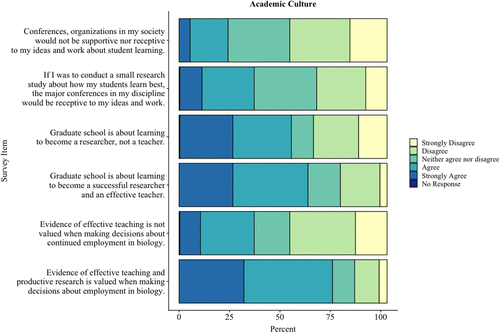
FIGURE 9. Biology graduate students’ perceptions of the academic cultural structure.
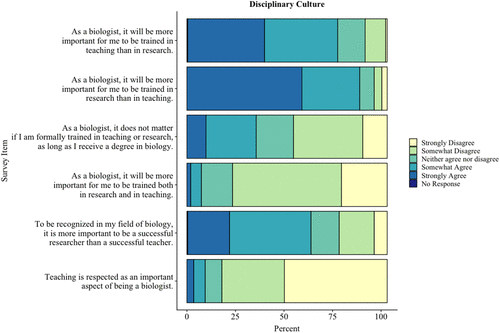
FIGURE 10. Biology graduate students’ perceptions of the disciplinary culture structure.
Academic Culture.
There was evidence that effective teaching and productive research is valued; however, effective teaching alone is not as valued as research (Figure 9). As a sample, graduate students are mostly neutral (mode = 3) for whether their conferences and organizations would be supportive and receptive of research on student learning.
Disciplinary Culture.
The majority of students strongly or somewhat agreed with teaching being more important than research or with research being more important than teaching; however, few strongly or somewhat agreed with both being important (Figure 10). This indicates that biology graduate students are indeed receiving messages about prioritizing teaching or research rather than a holistic prioritization of both research and teaching.
DISCUSSION
This work contributes to the scholarship exploring evidence-based STEM graduate student professional development by focusing on a sample of biology graduate students and their holistic development as scholars. It is aligned with recent policy calls for a renewed focus on STEM graduate education that considers all components of scholarly development under the umbrellas of research, teaching, and service (NASEM, 2018). This work examined biology graduate student perceptions of the relationship between research and teaching within their larger academic ecosystems and how these perceptions might impact their future professional career choices and identities.
The intersection of research and teaching is a common characteristic of higher education institutions and therefore an important contextual factor in which graduate student professional development is embedded (e.g., Trautmann and Krasny, 2006; Fairbrother, 2012; Gilmore et al., 2015). Few studies have attempted to understand how graduate students negotiate their own professional development as scholars at the intersection of their research and teaching responsibilities and how that may be influenced by disciplinary context. Previous research with faculty found that disciplinary culture could influence perceptions and manifestations of the RTN (Taylor, 2008). These results indicate that academic culture exerts both social and cultural influences that shape the perceptions of this nexus, the professional identities, and future career plans in different academic settings. This suggests these contexts as a target for professional development strategies.
Our findings suggest a complex relationship between participant perceptions of the RTN, the context in which they are developing, and their identities as either researchers or teachers (research question 1). These developmental contexts (i.e., microsystem, exosystem, and macrosystem) might indirectly influence the practices associated with research or teaching through their direct influence on professional identities. Our data show that the majority of our participants held a hybrid identity (researcher-teacher or teacher-researcher) in addition to their synergistic perceptions of the RTN. In academia, there is a dynamic push and pull between development of an integrated researcher-teacher identity and the external messages one receives from the environment (Austin, 1996; Colbeck, 2008).
We do not yet know how scholarly identities evolve over the course of a graduate student’s professional development as a scholar. However, with our results demonstrating a hybrid identity, it is imperative that we understand whether this identity is sustainable through a scholar’s career. This is complicated by the fact that professional identity is a multifaceted and dynamic self-image relating to the various roles an individual assumes (Beijaard et al., 2004; Trede et al., 2012). Included in this dynamic identity are a sense of autonomy and professional commitment (Barbour and Lammers, 2015). For example, Colbeck (2008) discussed the multiple identities that academics can hold and how holding them can be stressful for the individual, particularly if the meanings of these identities contrast with the meanings and expectations given by the environment and social networks in which the individual works.
Biology graduate students reported receiving mixed messages about the RTN from their social structures in their microsystem and exosystem (research question 2). When assuming multiple or hybrid identities, biology graduate students might weigh certain messages against others depending on their career plans. This process of weighing synergistic and antagonistic messages related to research and teaching coming from multiple organizational levels may place an unnecessary burden upon graduate students. Prior research suggests that, when individuals fail to receive messages congruent with their professional identities and career plans, this repeated lack of verification can lead to emotional exhaustion (Haines and Saba, 2012). These “verification contexts” might reinforce a specific type of identity while not verifying the other. Participants in our study held both researcher and teacher identities (hybrid identities) in a context in which they were receiving mostly antagonistic messages. This suggests that participants are undergoing a decision-making process in which they are selecting only those messages that they feel are most aligned to their identities and career plans. Within this complex verification context, it is likely that our participants may experience mental health issues as they deal with the real or perceived conflicts between their professional identities and the messages they are receiving.
There is little research that examines the quality and quantity of the messages related to research and teaching that flow down to graduate students from various ecosystem levels. In one example, Lane et al. (2018) found that biology graduate students experience a “blizzard” of information about teaching from many organizational levels. Other scholars have demonstrated the importance of communicating ideas about research and teaching to graduate students to promote their professional development (Austin, 1996; Nyquist and Sprague, 1998; Weidman et al., 2004; Colbeck, 2008; Sweitzer, 2009). Within the present study, we have evidence that this blizzard of messages includes those related to teaching, research, and the relationship between them. For example, some graduate students still reported receiving social messages about research and teaching at the exosystem level. Support for the complexity of this verification context comes in the form of a theoretical model developed by the authors, the research–teaching ecology (Reid, 2020). Implications for this are that professional developers should pay close attention to the actors within graduate students’ professional networks and the impact they have on graduate student professional development.
While biology graduate students in this study mostly perceived a synergistic relationship between research and teaching, this was in contrast to the largely antagonistic social and cultural contexts in which they develop as graduate students (research question 3). Biology graduate students perceived a differential value placed on research and teaching within the various ecosystem levels. These perceptions were reinforced by participants’ acknowledgment of the differential resources provided within their departments for research versus teaching as well as the disproportionate role placed on research in career attainment and advancement (institutional and academic levels). While, in general, academics might be committed to research, teaching, or both, these commitments are often in tension with the departmental, institutional, and disciplinary environments. At many institutions, exosystem culture promotes commitment to research rather than teaching. This is evidenced by the differential values placed on teaching and research components to promotion and tenure (Dennin et al., 2017).
We envision two important steps to build from this work. First, scholars should address this blizzard and ask questions about how biology graduate students prioritize and negotiate the internalization of conflicting messages they receive. Colbeck (2008) discussed how professional identities are shaped from the internalization of norms and values associated with the profession. If biology graduate students hold a synergistic perception of the RTN, as well as hybrid identities, they are choosing to internalize synergistic messages over antagonistic ones. However, it is not clear from this study whether their identities and perceptions inform their internalization or if the internalization of messages informs their identities. Future work should also explore how this relates to current issues in graduate education: mental health (e.g., Evans et al., 2018), retention of students in graduate degrees (NASEM, 2018), and influences on their teaching and research behaviors.
Conclusions and Limitations
The following section discusses limitations that should be considered when interpreting the results of this study. First, this work used a cross-sectional survey to elicit biology graduate students’ perceptions of the RTN, and we acknowledge that survey studies may not attend to the subtleties in the ways that individual participants define, conceptualize, and identify with research and teaching. Further work should consider this validation issue and use qualitative data sources that allow for deeper exploration of the meanings associated with these perceptions. A second limitation to this study is related to the noted issues of volunteer samples. The results of this study demonstrate a large skew toward synergistic relationships between research and teaching by biology graduate students, and this could be due to sampling bias.
In conclusion, biology graduate students are socialized into complex ecologies of research and teaching. Professional developers should consider these intersecting ecologies when designing and implementing professional development programs targeted at teaching. The messages received from these ecologies are not always congruent with the intentions of professional development strategies (e.g., workshops, programs, courses) and we currently have little understanding about how biology graduate students prioritize these messages. Also, while graduate students hold synergistic perceptions of the RTN, how do the goals of formal professional development programs align with these perceptions, and do these perceptions align with the use of research-based instructional strategies? To our knowledge, there are no studies that have correlated perceptions of the RTN to teaching practices. The present study lays the foundation to begin to ask these questions and to explore graduate student professional development from broader perspectives than teaching professional development.


